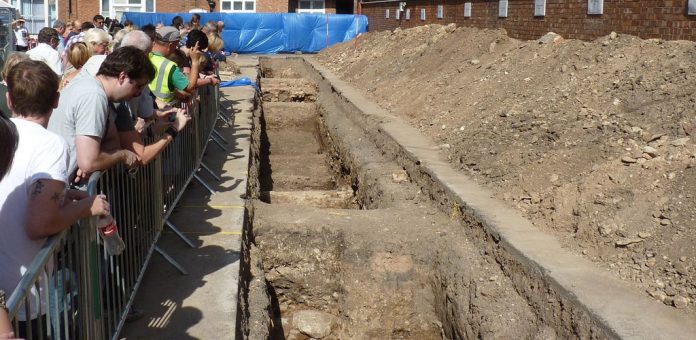Section 25 of the Burial Act of 1857 states that it is an offence to remove buried human remains without a licence from the Secretary of State, or, in relation to consecrated religious grounds (i.e. CofE), a faculty.
The burial licence is obtained from the Ministry of Justice, requesting that if human remains are discovered, lawful permission is given to lift the remains.
The Burial Act ensures that human remains are not unlawfully removed or disturbed and it also ensures that the correct ethical procedures and legislative standards are implemented and followed.
This aids archaeologists and osteoarchaeologists during exhumation of human remains, as the correct legal frameworks are implemented.
In the mid 19th century, a series of acts were passed in Parliament which became known as the Burial Acts. Consolidated in 1857, the acts established a national system for the development of public cemeteries. Burial Boards were appointed by parish vestries, and were responsible for providing for the interment of the dead of the parish. The Board would do this by building the cemetery and charging the expenses to the Poor Rate.
The Burial Board was responsible for the maintenance and management of the cemetery, including fixing fees, burial charges and the sale of burial plots. The public cemeteries would have grounds consecrated for Anglican parishioners and grounds unconsecrated for the use of Non-conformists. The consolidation of the Burial Acts resulted in a large number of rural and urban cemeteries being built, resulting in effective management of the disposal of the dead in growing towns and villages.
Burial ground managers may sometimes receive requests for the reinterment of human remains which have been exhumed from elsewhere (DCA 2005, 7). Most of these applications are made by professional archaeologists and likely involve ancient human remains (ibid).
In order to reinter human remains to a burial ground, the Burial Act requires that some sort of documentary evidence (i.e. a licence) is obtained. However, failure to provide the documentary evidence relating to the exhumation will not present a legal obstacle to the re-burial of the remains, although the burial grounds manager and/or clergy representative should make sure that the remains were not unlawfully acquired (ibid).

Changes to burial law
In 2004, a consultation document was issued by the Home Office with regards to possible changes on burial law. The general public were asked to respond to suggested changes in burial law policy, namely the possible re-use of graves.
The recent excavation of the body of King Richard III in Leicester also sparked proposed changes to burial law. It was stated that the wording of Section 25 of the 1857 Burial Act did not technically apply to this specific burial.
The proposed amendments to Section 25 of the Burial Act include:
“It is an offence for a body or any human remains which have been interred in a place of burial to be removed unless one of the conditions listed in subsection (2) is complied with.” (Law & Religion UK 2014).
Pagan groups
Pagan groups frequently call for the re-burial of prehistoric human remains excavated on archaeological sites. Pagans perceive the world as sacred and that humans are deeply connected with nature (Wallis & Blain 2011, 2-3). When an individual is interred in the earth, the body is re-connected with the natural world and to break this connection i.e. the excavation or exhumation process, is heinous and a desecration of the individual’s final resting-place. The Burial Act will permit archaeologists to excavate prehistoric human remains with a licence. Their re-burial, however, is a hotly-debated and emotive issue and a solution has yet to be reached.


